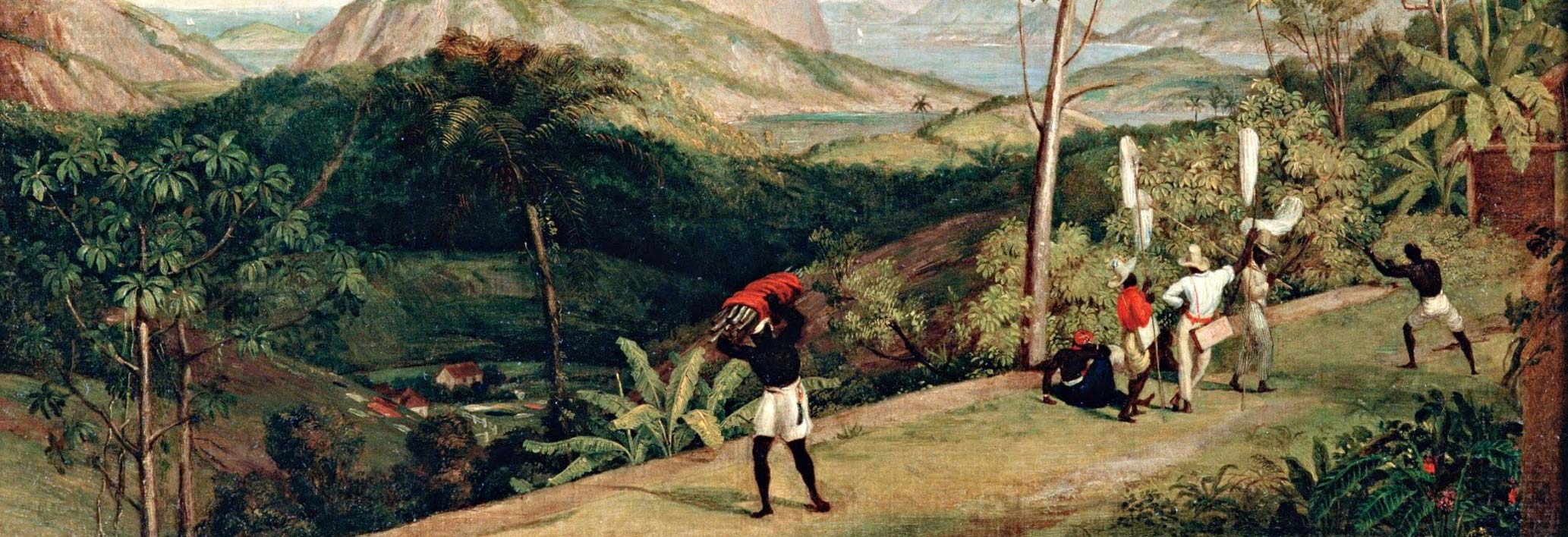Felisberta was a household slave and wet nurse who served a wealthy family in the Paraiba Valley, a prosperous coffee-producing region of southeastern Brazil.
She was born between the third or fourth decades of the nineteenth century. The archival records are sparse, but an inventory lists Felisberta as a Cabinda slave from Africa (modern Angola or Congo), which was not very common among contemporary household slaves.
Felisberta was enslaved on a large coffee plantation known as fazenda Pau Grande in Rio de Janeiro Province. She served Joaquim Ribeiro de Avellar Junior, the future viscount of Ubá, and his new wife Mariana Velho de Avellar. In January 1857, the couple chose Felisberta to be the wet nurse (ama-de-leite) to their daughter Luiza. In March 1858 she also breastfed their next daughter, Julia. In May 1862, the family sent Felisberta to Rio de Janeiro to breastfeed and care for Maria Izabel, her mistress Mariana’s niece.
Domestic slavery was a widespread practice in nineteenth-century Rio, with slaves performing many functions for wealthy families. Working with the Ribeiro de Avellar family probably as a mucama (private maid), Felisberta had to learn new habits to be able to accompany Mariana and her daughters on social occasions. The majority of materials on child care during the Brazilian Empire recommended the exclusive care of one wet nurse to protect the health of the baby. The child’s parents were to guarantee that the wet nurse maintain proper eating and sleeping habits to safeguard the future health and character of their children. Based on her experience as a wet nurse, it appears that Felisberta experienced three or more pregnancies between November–December of 1856 and May–June of 1862. She was probably among the many enslaved wet nurses who were not allowed to breastfeed their own children, instead handing them over to other slave women of the same household.
Felisberta remained in Rio to serve as a wet nurse until the end of 1862 when she returned to fazenda Pau Grande for health treatment. Upon her return, she was described by her mistress as “already too old to serve as wet nurse, but still a caring and clean person.” She served her masters by ironing clothes, cooking, and housekeeping. Felisberta is emblematic of the many enslaved women who played such roles in nineteenth-century Brazil and remembered in popular culture as the figure of the mãe preta (black mother).
Bibliography
Freyre, Gilberto. The Masters and the Slaves: A Study in the Development of Brazilian Civilization. Berkeley: University of California Press, 1987. First published 1933.
Karsach, Mary C. Slave Life in Rio de Janeiro, 1808–1850. Princeton: Princeton University Press, 1987.
Muaze, Mariana. As memórias da viscondessa: Família e poder no Brasil império. Rio de Janeiro: Zahar, 2008.
Muaze, Mariana de Aguiar Ferreira and Simmone Guilherme. "Felisberta." Dictionary of Caribbean and Afro-Latin American Biography , edited by Ed. Franklin W. Knight. , edited by , Henry Louis Gates Jr..Oxford African American Studies Center, http://www.oxfordaasc.com/article/opr/t456/e769 (accessed Thu Sep 05 11:22:25 EDT 2019).
Salles, Ricardo. E o vale era escravo. Rio de Janeiro: Civilização Brasileira, 2008.
Slenes, Robert. "Senhores e subalternos no oeste paulista." In História da vida privada no império, edited by Luiz Felipe Alencastro, pp. 233–90. São Paulo: Companhia das Letras, 1997
Author
Mariana de Aguiar Ferreira Muaze
Adapted by
James Almeida and Steven J. Niven
Contributing Institutions
Hutchins Center for African & African American Research, Harvard University, Cambridge, MA.
Oxford University Press (USA) African American Studies Center.





